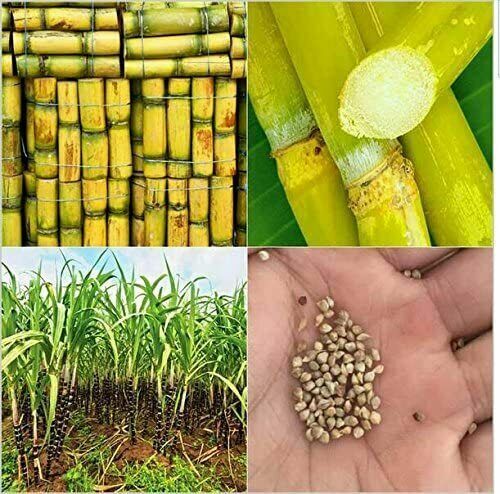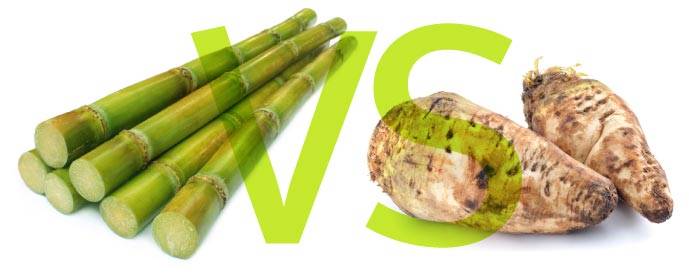Cane Sugar Processing: Cutting-edge Methods for Quality Manufacturing
Cane Sugar Processing: Cutting-edge Methods for Quality Manufacturing
Blog Article
A Thorough Overview to the Environmental Influence and Sustainability Practices in Cane Sugar Handling
The environmental impact of cane sugar handling presents an intricate array of challenges that warrant careful exam. From soil deterioration and extreme water usage to the carbon impact connected with cultivation and production, the consequences of standard techniques are far-reaching. What particular techniques can be carried out to strike a balance in between efficiency and environmental stewardship?
Review of Cane Sugar Handling
Cane sugar processing involves a series of organized actions that change sugarcane into refined sugar. Originally, harvested sugarcane is transferred to processing facilities, where it undertakes cleansing to get rid of dirt and particles. Following this, the walking stick is crushed to draw out juice, which is then cleared up by getting rid of contaminations through heating and the addition of lime.
The cleared up juice goes through evaporation, where water is gotten rid of to focus the sugar material. This concentrated syrup is then taken shape via cooling, allowing sugar crystals to form. These crystals are divided from the remaining syrup utilizing centrifugation, causing raw sugar. To accomplish refined sugar, the raw item undergoes more filtration procedures, which may consist of filtering and washing to remove remaining contaminations and shade.
The end product is after that dried out and packaged for circulation. Throughout this entire process, preserving effectiveness and top quality control is important to guarantee the sugar meets industry requirements. Each action in cane sugar handling not only contributes to the last product yet additionally has implications for resource usage and waste generation, setting the phase for conversations on sustainability and environmental influences related to sugar manufacturing.
Ecological Obstacles of Production
The manufacturing of cane sugar offers a number of significant environmental obstacles that warrant focus. One primary worry is the extensive use of agrochemicals, consisting of plant foods and chemicals, which can result in soil deterioration, biodiversity loss, and contamination of neighborhood water sources. The runoff from sugarcane areas usually lugs these chemicals right into neighboring communities, interrupting marine life and affecting the health and wellness of areas reliant on these water bodies.
An additional difficulty is the high energy intake related to sugarcane handling. The boiling and refining stages call for substantial heat, mainly produced by burning fossil gas, adding to greenhouse gas discharges. In addition, the extensive acreage required for sugarcane farming can lead to deforestation and habitat devastation, more intensifying environment adjustment and harmful wildlife.
In addition, the labor methods in some regions raise moral worries, as workers may face inadequate working problems and poor wages. This circumstance usually perpetuates a cycle of destitution in regional areas. Cane Sugar Processing. Resolving these ecological obstacles is essential for creating more sustainable practices in walking stick sugar manufacturing, ultimately benefiting both the environment and the neighborhoods associated with this market
Water and Land Usage Influence
Water resources and land usage are essential parts in the walking stick sugar market that considerably influence the environment. The farming of sugarcane needs considerable water input, with quotes suggesting that it can take in as much as 2,000 liters of water per kilo of sugar created. This intensive usage of water typically leads to exhaustion of neighborhood water sources, impacting not just the sugarcane ranches however likewise bordering environments and areas that depend on the exact same water sources for agriculture and domestic usage.

Additionally, land usage for sugarcane cultivation can lead to deforestation and the conversion of natural environments right into monoculture ranches. This practice lessens biodiversity, interrupts regional ecosystems, and adds to dirt destruction. The growth of sugarcane areas often elbows in on important agricultural land, creating competition for sources in between food and biofuel production.
Lasting methods, such as optimizing irrigation techniques and applying plant rotation, are vital to reduce these influences. By taking on much more efficient water usage and land monitoring techniques, the walking stick sugar market can reduce its eco-friendly footprint, making certain an equilibrium in between agricultural efficiency and ecological preservation.
Greenhouse Gas Emissions
Greenhouse gas discharges stand for a significant ecological concern within the cane sugar handling market, particularly as agricultural methods broaden to fulfill global need. The growing of sugarcane, a crop that prospers in tropical climates, counts greatly on synthetic plant foods and chemicals, which contribute to nitrous oxide exhausts. Furthermore, land-use adjustments, consisting of deforestation for new sugarcane vineyards, launch co2 stored in plant life and soil.
During handling, power consumption is an additional major resource of greenhouse gas discharges - Cane Sugar Processing. Several sugar mills make use of fossil gas to power equipment and create warmth, causing considerable carbon footprints. Additionally, the transport of raw sugarcane and finished items adds layers of emissions through gas burning in lorries
The collective result of these discharges worsens climate adjustment, presenting threats not only to the environment but also to the long-term practicality of the sector. Stakeholders have to recognize the immediate need for thorough approaches that attend to these exhausts. This entails assessing present agricultural practices, processing approaches, and transport systems to determine locations for enhancement and reduction. Resolving greenhouse gas emissions is necessary for promoting a pop over to this site much more lasting walking stick sugar industry in an altering environment.

Sustainable Practices and Innovations
Lasting methods and advancements are significantly important in the cane sugar processing industry as stakeholders seek to reduce ecological impacts while maintaining productivity. One substantial improvement is the implementation of integrated crop administration, which optimizes resource usage by integrating soil monitoring, insect control, and plant turning techniques. This method enhances return while lessening chemical inputs and preserving dirt health and wellness.
In addition, the adoption of renewable resource sources, such as biomass from sugarcane deposits, has actually obtained traction - Cane Sugar Processing. By converting waste products into energy, refining facilities can minimize their dependence on fossil fuels, thereby decreasing greenhouse gas exhausts
Water monitoring methods have also seen improvements with the recycling and reusing of water in processing plants, dramatically reducing freshwater consumption. Developments in modern technology, such as accuracy agriculture, make it possible for farmers to check plant health and wellness and resource use a lot more effectively, guaranteeing lasting cultivation techniques.
Moreover, accreditation programs like Fair Trade and visit this page Rain forest Partnership motivate environmentally accountable farming practices and promote social equity within the supply chain. By embracing these lasting techniques and technologies, the walking stick sugar processing industry can boost its resilience and add positively to ecological stewardship.
Verdict
The environmental effect of walking cane sugar processing provides substantial difficulties, including dirt destruction, high water intake, and greenhouse gas discharges, together with ethical problems associated with labor practices. Attending to these concerns through lasting techniques, such as incorporated crop management, renewable resource adoption, and water recycling, is crucial. By advertising eco liable and socially equitable methods in sugar production, the industry can alleviate its negative impacts, ensuring an extra sustainable future for both ecosystems and neighborhoods included in this industry.
Walking cane sugar handling entails a collection of organized steps that transform sugarcane right into refined sugar. Each action in walking stick sugar processing not just contributes to the final item yet likewise has effects for source usage and waste generation, look at this website establishing the stage for conversations on sustainability and ecological effects connected with sugar production.
Greenhouse gas exhausts represent a considerable environmental issue within the walking stick sugar handling sector, specifically as agricultural techniques expand to meet worldwide need.Sustainable methods and developments are significantly essential in the walking stick sugar processing industry as stakeholders seek to decrease ecological impacts while preserving performance.The environmental influence of cane sugar handling provides significant challenges, consisting of soil destruction, high water intake, and greenhouse gas exhausts, together with honest concerns connected to labor methods.
Report this page